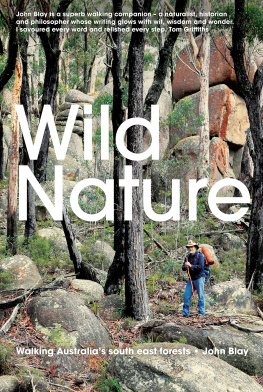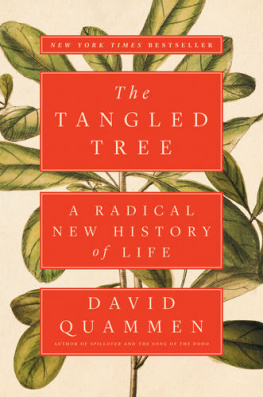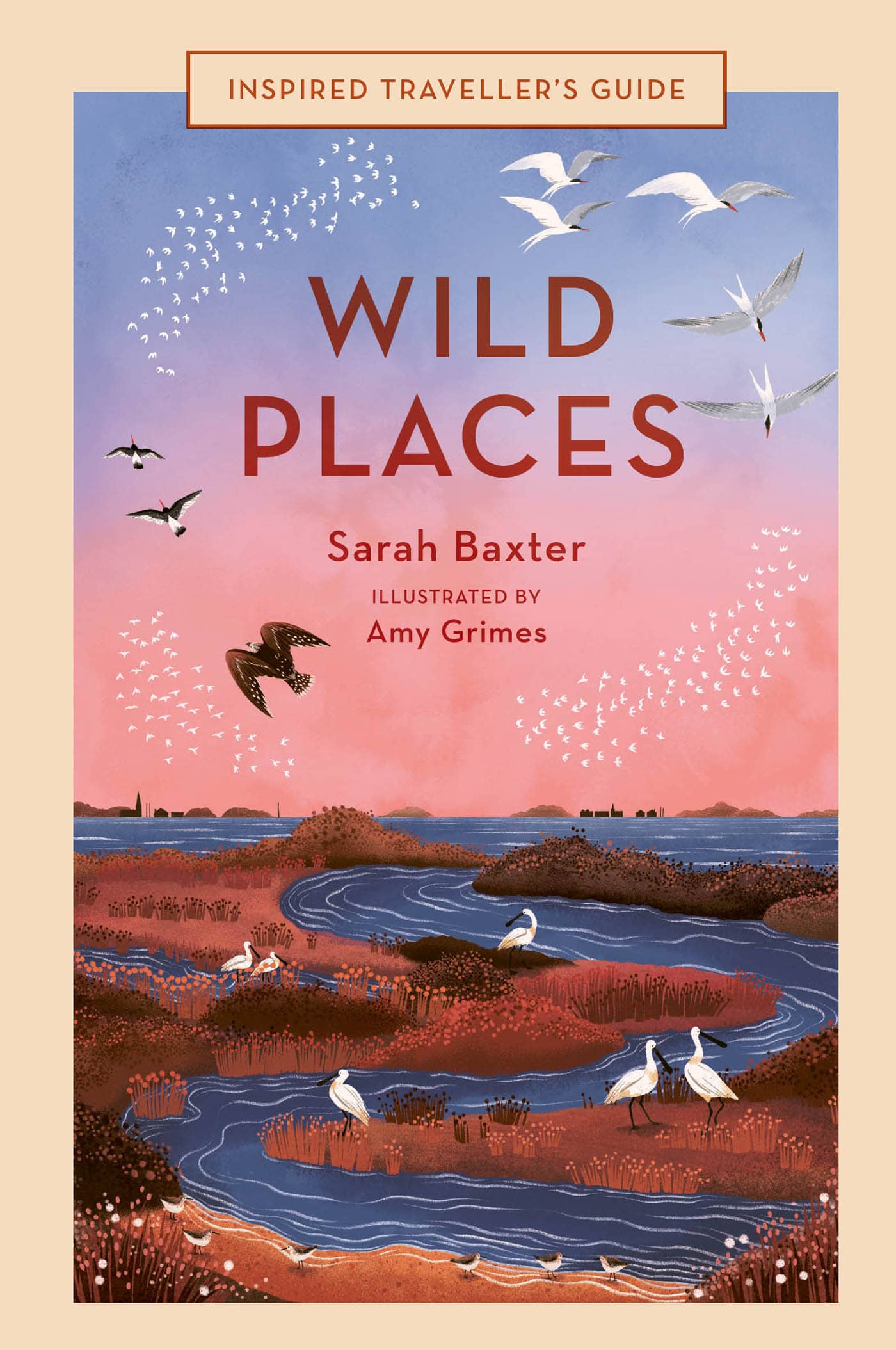Contents
Page List
Guide
Cover
INSPIRED
TRAVELLERS GUIDE
WILD PLACES
SARAH BAXTER
ILLUSTRATIONS BY
AMY GRIMES
CONTENTS
INTRODUCTION
WE NEED the tonic of wildness, wrote American naturalist Henry David Thoreau. At the same time that we are earnest to explore and learn all things, we require that all things be mysterious and unexplorable, that land and sea be indefinitely wild, unsurveyed and unfathomed by us because unfathomable. We can never have enough of nature.
Thoreau knew a thing or two about wild places. We dont just like them. We need them; we need their scale, their breadth, their drama, their enigma. They can be a balm and a solace; an escape or a returning; a best friend; an inner cleanse. And they can remind us of our unimportance in the world. For really, despite all the advances of human civilisation, weve yet to come up with anything to rival the majesty of a mountain, the explosive palette of the setting sun, the haunting song of the humpback whale, the iridescent sheen on the back of a tansy beetle.
But what is wild? Few corners have been left unconquered on this planet. Truly pristine wilderness untrodden, unmapped, unknown is rare indeed. However, that doesnt mean weve tamed it all, or that places touched by human hands cant still feel wonderfully untouched. A wild place is somewhere that speaks to us on a different level. A landscape that seeps into our deepest recesses; provokes wonder, awe or fear. A place where were not in charge, not really. A location where, in the shift of a tectonic plate or the flap of a butterflys wing, the ground could erupt beneath us, the mud suck us down, the predator pounce in for the kill.
That said, the wild places chosen here all have some sort of human tale to tell. Many are woven into the folklore of those whove made them home; places laced with long-standing legends of bears that are sacred (). We cannot truly understand all parts of nature but, over the millennia, our stories have helped us to live within it.
In some cases, weve made a down-right mess of this wonderful world but were seeking to make amends. There are growing numbers of successful rewilding projects, providing rays of hope in the gloom; environments that have suffered at our hands that are beginning to revive from constrained rivers now allowed to run free (). Maybe, when given space, these places can be reborn better than before?
So, within these pages, well venture into a variety of untamed regions. Some are wild thanks to their remoteness, adrift in the furthest oceans or tucked into the deepest bush. In some, it is the life that is wild places stalked, slithered and swum by a marvellous, multitudinous menagerie. Some places are battered by wild weather, making them hostile in the extreme (though often both animals and humans have tried to find a way). Some are wild in the wackiest sense places of the unmatched peculiar, where the terrain fizzes or bends or squelches not quite how you might expect.
On this virtual journey well dip into the most vivid seas, where the coral and fishes dazzle like underwater rainbows. Well skirt the edges of enormous deserts to stare across dunes that undulate to the horizon and beyond. Well take a walk along an old iron curtain, where miles and miles of death and destruction have been turned into life and hope. And well visit far-distant islands that, with their unique beasts and birds, managed to alter the course of human understanding, causing us to question the very nature of existence.
Ably accompanied by evocative illustrations, which conjure the essence of each place, you can travel to the ends of the earth without leaving the comfort of your couch. You can become an adventurer in your own armchair, travelling from the icy cold of the poles () in just the flick of a page.
This book is limited to just 25 wild places but, of course, there are many, many more. Even though we humans have managed to transform, in some way, 70 per cent of all ice-free land on the planet, there is still a lot of wilderness left; there are still so many fascinating sites, each unique. Indeed, with more space I would have taken you on a virtual plunge into brisk-and-beautiful Baikal, the oldest and deepest of lakes in Siberias untamed taiga; around 1,700 endemic species are found here, as well as the indigenous Buryat, who consider Baikal their Sacred Sea. For a really weird wild show, we might have detoured to Ethiopias Danakil Depression, arguably the planets hottest, lowest and least hospitable spot. In this faraway alien landscape, volcanoes glow and gurgle, molten lakes boil, the earth is cracked and rippled, and the rocks and pools clash in garish reds, yellows and greens; yet its also the Cradle of Humanity, where some of the earliest hominid fossils have been found. Or we might have found unexpected wildness within the city limits: in Kenyas Nairobi National Park you can see black rhino, lions, giraffes and cheetahs grazing and lazing before a backdrop of sky-scraping steel and glass.
Because, no matter how much we screw up this planet, Mother Nature finds a way. And, for the sake of our sanity, our souls, our very survival, long may she continue.
ENNERDALE
Where? | Cumbria, England |
What? | Glacial valley on the Lake Districts edge where the river once more runs free |
THIS VALLEY had long been shaped by the hands of man. But now, left largely to her own devices, Mother Nature is wresting back control. Unruly native tree roots are rising amid the orderly plantations, an arboreal insurrection that brings new colours and textures, changes the tone, softens the lines. The formidable uplands are once again flecked with rare wildflowers with names that read like poetry: mountain eyebright, alpine catchfly, scrubby cinquefoil, starry saxifrage. And the unkempt River Liza runs as it pleases, cold, crisp, feral, free. Yes, this place is flourishing after its semi-divorce from humankind. It is sometimes calm, sometimes chaotic but it is always as it wishes. It is finding itself once more...
The entirety of the English Lake District has a rare, wild beauty. Carved from the ancient Cumbrian bedrock by a succession of glaciations, the resulting landscape is high drama indeed. Wide U-shaped valleys swoop between rugged, pointy peaks and smooth, broad-shouldered fells, old-growth forest sits beneath gusty moors, roads snake and shinny up steep hold-your-breath passes and mirror-like waters, meres and tarns are scattered all about some are island-dotted and expansive, others almost too tiny to map, glittering amid the mountains.
Of course, these topographical theatrics havent gone unnoticed. This is Englands busiest national park, and honeypot spots such as Windermere and Coniston heave in season, tourists thronging to buy slabs of Kendal mint cake and hop aboard vintage paddle steamers. But Ennerdale is different; an outlier in many ways.










